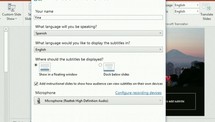Translating Songs: Challenge to Take
Music is quite a phenomenal thing indeed. Translating songs became an essential component of the translation industry. Like other forms of art, music is able to inspire people, uplift them, or to make them share compassion. While the melodic qualities can be largely responsible for such emotional output, only the lyrics can make all that happen. Oftentimes, the song's lyrics, paired with melody, create an extremely strong synergy that combines a powerful meaning with pure sensation, which turns a song into appealing, but also vital masterpiece for some people.
With the rise of digital technology, people gained access to all kinds of music, including the one that creates a strong emotional response. However, not all music is written in one language. So, while a song can create an emotional response in its original language for native speakers, it might sound meaningless to people speaking other languages. To fix this issue and make it beautiful for more people, the translations of songs are made. And they might be much more challenging than it seems.
Difficulties of Translating Lyrics
It might seem like an easy task, just to translate a relatively small portion of the rhymed text. Basically, all you have to do is to be fairly familiar with the song's original language, and a target language. Yet, things to know and to consider don’t stop right there. Actually, knowing two languages perfectly is only icing on the cake and you have to do much more work. Perhaps, the most closely related operation to translating the song’s lyrics is localizing the content. That is, adapting original text’s meaning to target language specifics and native speakers’ cultural background. So, in case if a song, for example, cites a proverb, uses an idiom, or references a certain place, event, or local social movement, none of that can be merely interpreted.
For you to properly translate lyrics of a popular soundtrack, the person working on it must consider the meaning behind all cultural references that might occur in original text, not only meaning itself. Professional song translator often understands that it’s sometimes better to completely rewrite lyrics than to stay faithful to the original language. That is so because, aside from the meaning, there are many other aspects to keep in mind. Remember, lyrics are only a part of the whole musical complex that song is.
Some other crucial aspects to consider when remaking the song into another language are rhythm, melody, and overall singability in target language. Yet, more on that later. So, how can you interpret the lyrics of your favorite music without professional training and lots of practice? There’s a couple of shortcuts, which are not that challenging, but not that satisfying at the same time.
Ways to Translating Lyrics
There are a couple of ways you can translate that song that’s been stuck in your head for days. The way to do that depends on how much you need to know what’s the song about. If you want to understand general meaning then you can opt for simpler, less time consuming, but less thorough methods. Those would include using GoogleTranslate or similar automated translators, although, they might get very wrong at times and, instead of understanding your song better, you might get lost even deeper.
Aside from GoogleTranslate, one may use different apps, or search for platforms on the internet where other people interpret their favorite songs’ lyrics. However, such platforms might not always provide translation of a specific song or sit will not be singable, with only literal interpretation being available. If a song means something special to you and you would even like to make your own version, you should go the hard way and translate song in the good old way.
Most Reasonable Strategies to Song Interpretation
Manual translation of a song is when you choose to work on it by yourself. To translate the song’s lyrics like this may seem quite hard, nevertheless, that’ll be the only method to have satisfactory final results. Luckily, there are a few strategies you should consider before you start working.
- Do not translate lyrics literally. Try to provide listeners with meaning of the words rather than translation. It’ll do a much better job than even the most precise translation possible.
- Work in stages. Try not to concentrate on music first and localize the lyrics. Then, make rhymes rounder and lyrics singable. Adjust them to the original melody.
- Rewrite the lyrics. If composition touches upon an extremely delicate subject that turns translation into an extremely challenging process if not impossible, leave it. Write new lyrics that’ll either approach the subject from a different perspective or will discuss another similar one.
- Adapt melody to translated song lyrics. While this is kind of a shortcut, it’s quite challenging as, in addition to fluency in two languages, you will also need to be familiar with some music theory to rewrite a voice's melody, even if only slightly.
- Adapt translated lyrics to melody. This option is quite challenging but it is more reasonable than the previous one. You don’t have to rewrite a melody or use music theory, but only to consider your word choice. Replace longer words with shorter ones and vice versa or pick more poetic vocabulary that would emphasize on sentiments of original.
So, looking at things from such a perspective makes lyrics translation a little bit easier. Indeed, some examples of song lyrics translated into other languages, like Spanish to English, often demonstrate the use of strategies mentioned above. Before getting to that, let’s look at aspects mentioned so many times in this article.
What is Singability?
Essentially, singability is a kind of matching lyrics quality. When lyrics are singable, they can be sung along with music without breaking rhythm, thus, not causing any difficulties for a lead singer. This is a particularly important factor to consider when working on interpretation. In most cases, the languages do not sound similar, so it’s nearly impossible to deliver the same meaning using two different languages. That is why most translators of songs use synonyms, similar but not the same meanings, paraphrase lyrics, or even rewrite some phrases. Major theme or subject should still be kept in order for a song to stay faithful to its author and to make sure that his or her idea is delivered to the target audience appropriately.
Read also: Find the best financial translators and get an excellent translation!
How Close Should Translator Be to Initial Theme?
That mostly depends on the target audience, song performer, author of the initial song, and its subject. Some upbeat cheerful tracks that use abstract imagery or address abstract subjects may be converted to another language rather freely in most cases. That is, overall mood will likely remain the same, but words that describe and deliver that mood will be different. For instance, if the original author wrote about love and happiness overall describing them through metaphors of weather translator of the song use other metaphors but should still stick to love as well as happiness.
For heavier and more complex themes usually discussed using specific vocabulary, language experts should stay more faithful. That should be done in order to make sure that the author's intention is heard by the target audience as precisely as possible. Additionally, sometimes authors and original singers may sing translated songs as well. In case, if they do not deem translated lyrics appropriately, they may even refuse to provide copyright to language specialists. So, while lyrics interpreters have relative freedom in their work, they should still consider authors’ intention in order for songs in different languages to be heard from the original standpoint.
Examples of Greatly Translated Songs
Popular music has always thrived to remain popular and reach the greatest audience possible, so music translations have been made since the earliest years of pop music existence. That was especially evident in the 1960s, when music of such bands and The Beatles and The Beach Boys were translated into German, with rock'n'roll being very popular in that country. This trend was briefly revitalized in the 1980s, with David Bowie’s massive hit ‘Heroes’ being distributed as ‘Helden’ in Germany and as ‘Héros’ in France in 1980. Bowie sang both versions himself.
Perhaps one of the best examples of German translation is The Beach Boys’ 1963 song “In My Room” which sounded “Ganz Allein” in German. Take a look at how the second verse was handled.
| Original English lyrics |
German version |
Word-to-word version |
|
In this world I lock up all my |
Schloss und Riegel schliessen aus |
The locks and bars shut away |
|
Worries and my fears |
Furcht und Sorgen hier |
The fear and sorrow here |
|
In my room |
Ganz allein |
All alone |
|
In my room… |
Ganz allein |
All alone… |
In German, the lyrics have more detail to the metaphor, thus, making it even more delicate and touching upon its very personal, intimate subject. Not only the singer shuts away all his negative thoughts, but he uses the specific tools for it in the German version. Also, the translated track does not just concentrate on the singer’s room as the place for rest from all the darkness in his life, but rather his mind as a place to drift away from all unhappy thoughts.
On the other hand, other musicians change the song’s melody when translating it to another language. That often happens when they translate Spanish songs into English. As such, in 2001, the British singer and composer Damon Albarn wrote the song titled “Latin Simone (Que Pasa Contigo?)” for his virtual band project Gorillaz. It was written in collaboration with the Cuban singer Ibrahim Ferrer and lyricist Lazaro Villa. As a result, the original was released in Spanish. To translate lyrics about challenges in life and the importance of letting some things go, Albarn decided to stick to the original lyrics, thus, translating them almost literally. Yet, English words did not go well together with music, so Albarn simply changed the melody, singing almost as if speaking the lyrics.
So, there are many approaches to the translations of the songs, all of which work rather well. The most important thing to consider here is ensuring that the original essence of the lyrics is maintained, especially, for the songs exploring complex or personal subjects, like in the examples above. Some words are different, the subject may be explored from a slightly different perspective, or the whole song is rewarded but the original message must be delivered in most cases, if not always. Finally, it is similarly crucial to make sure not to offend the author of the original lyrics, their feelings, ideas, or simply the state of mind.
- Read also: Find reliable Norwegian translation services for your needs!
Translating Songs is Not an Easy Feat
But it surely is rewarding. Although it seems easy because of the relatively small amount of work to be done, the process might take longer than you think. You have to consider the original intent, the subject of the song, and how it will be sung in another language. Will the lyrics fit the music rhythmically? Will they sound appropriate? Should you adapt to music or to lyrics? All in all, the aspects discussed above must be considered when translating music professionally, aiming for high quality. Still, if you’re only wondering what the song is about, why not translate it well, nevertheless? In any case, you can always check out the reviews of top translation services at PickWriters and choose the most appropriate language expert.












